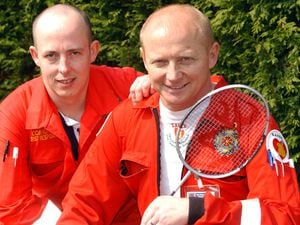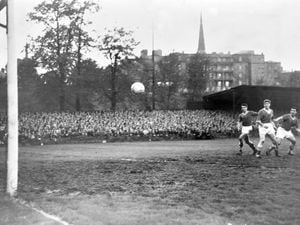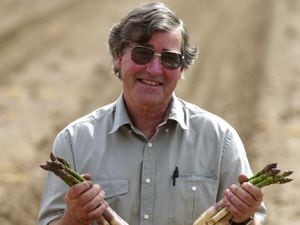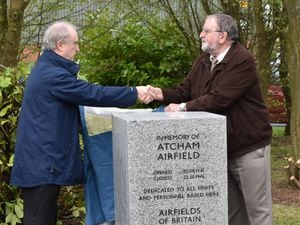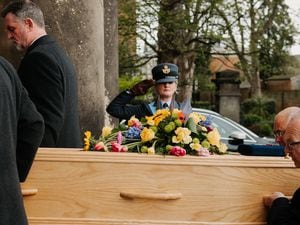Phil took no chances at navy base's wild VE Day celebrations
As Britain celebrated the end of the European war in May 1945, it so happened that Philip Moss was duty officer at Shropshire's only naval air base, HMS Godwit.
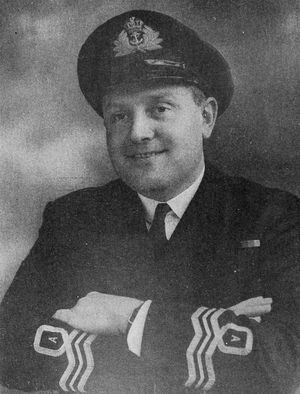
Taking no chances, he got a .32 Smith & Wesson revolver from his safe and slipped it into a shoulder holster under his jacket. He also organised a team of six from his section to accompany him.
Lieutenant Commander Moss was the officer in charge of the radio section at Royal Naval Air Station Hinstock, which had by 1945 also taken over the neighbouring bomber training airfield at Childs Ercall, called RAF Peplow.
Hinstock Hall was the officers' mess. The stable block was converted to accommodation for course pupils, and a large Quonset hut was added to one end of the hall as a dining room doubling as a ballroom.
"The signal to 'splice the mainbrace' came through from the Admiralty in the early evening and that was when the fun started. It went on all night and my party and I had a busy time," Moss was to recall in his book "Under Five Badges."
"Up at the officers' mess one young gentleman fell through an upstairs window in the stable block, nearly severing his arm on the broken glass. Why he didn't kill himself in the fall – some 12ft on to cobblestones – I'll never know."
He was rushed off to the sick bay.
"Another young gentleman became so maudlin he decided he was going to commit suicide and had to be restrained.
"Another bunch of merry young men threw the Executive Officer, Commander X, into the static water tank. Commander X had never been unduly popular and when he complained that he couldn't swim it only raised hoots of laughter.
"Before we could get him beached and fully pumped out there came a call from the Wrenery (that is, the accommodation for women from the Women's Royal Naval Service, or Wrens) to say that a gang of ratings had invaded and were threatening to rape some of the Wrens.
"When I appeared with my Brigade of Guards the sailors withdrew to their own camp.
"The next item on the agenda was that the ratings, thwarted of their prey, had dragged all the furniture out of their mess hall and set fire to it. Then we had to try and assemble a fire crew, but by the time they arrived there wasn't much furniture left. And so it went on.
"We of the sober party were all glad when eight o'clock came and I could hand over."
Before the war Moss had served in Jersey Airways as a radio officer and it was while there that he first met Irishman Johnnie Pugh, who joined Jersey Airways as a pilot.
Early in the war Pugh badgered the Admiralty about the need to improve blind flying skills and in 1942 was given the go-ahead to form a squadron for instrument flying training at Hinstock, and asked Moss to join him to look after all the radio equipment.
Moss was in the Royal Naval Volunteer Reserve, popularly known as the wavy navy, comprising peacetime civilians who had joined up for war service.
He writes in the book that they moved to Shropshire in August 1942, and when they landed at Hinstock – in fact geographically the airfield was at Ollerton – they found the grass had grown about two feet high as the RAF, from whom they were taking over the airfield, had stopped cutting it because it was no longer their baby.
RNAS Hinstock became a centre for teaching blind flying, pioneering techniques which were to make flying in bad weather or at night much safer. In particular airmen were trained in the use of Standard Beam Approach, in which they could ride a beam to land safely.
In 1943, Moss writes, the base had around 40 to 50 twin-engined Airspeed Oxfords, together with Harvards, some Wellington and Whitley bombers fitted out as flying classrooms, a flight of Anson calibration aircraft, and several Tiger Moth biplanes.
His own section was to acquire a cat, which they named QDM as it kept coming back and they concluded it had an in-built homing system – QDM is a radio code meaning "give me a homing bearing."
"More than once it climbed into an Oxford and participated in a training flight, though this wasn't always popular with the pilots.
"It was still there, holding court in the section, when I left in September 1945."

